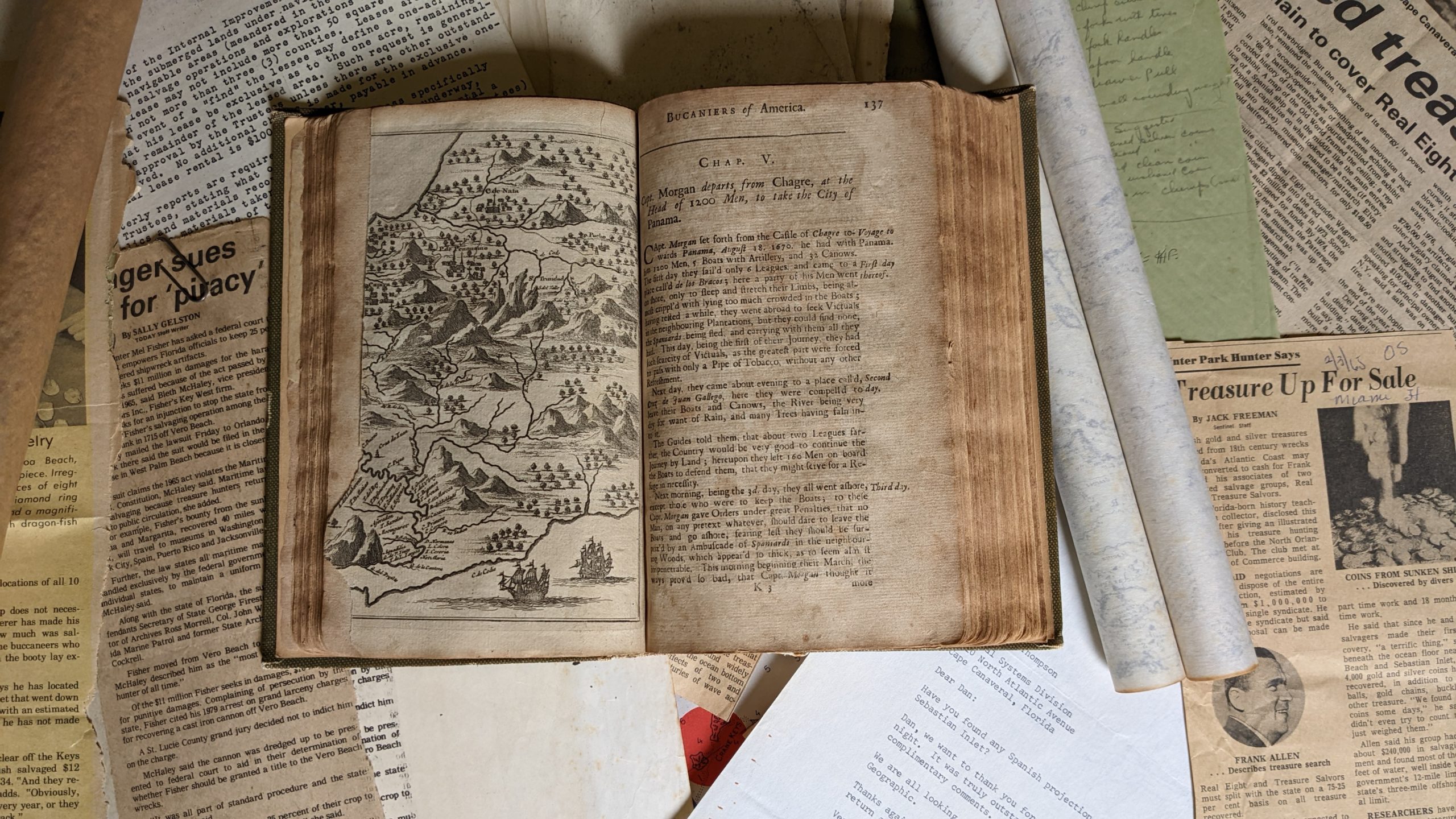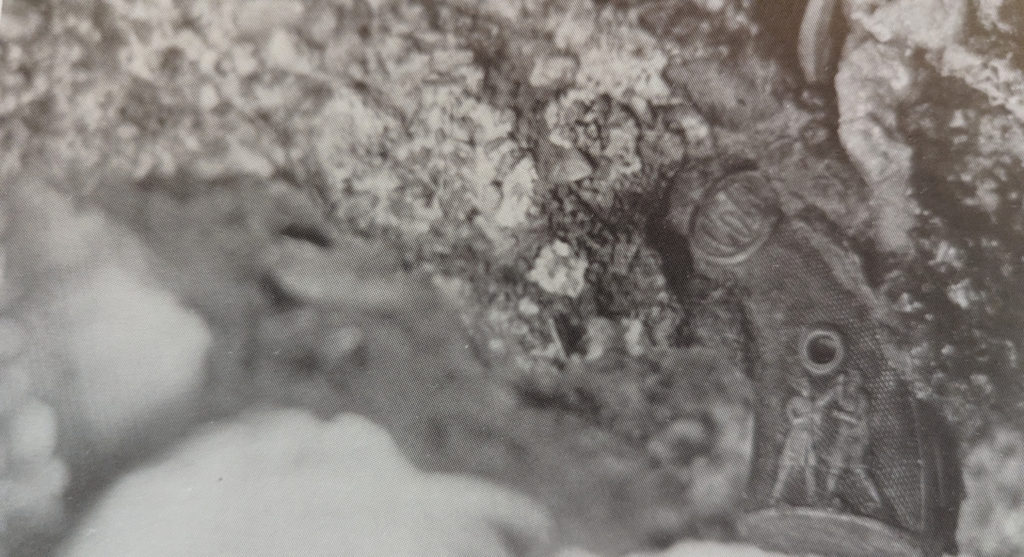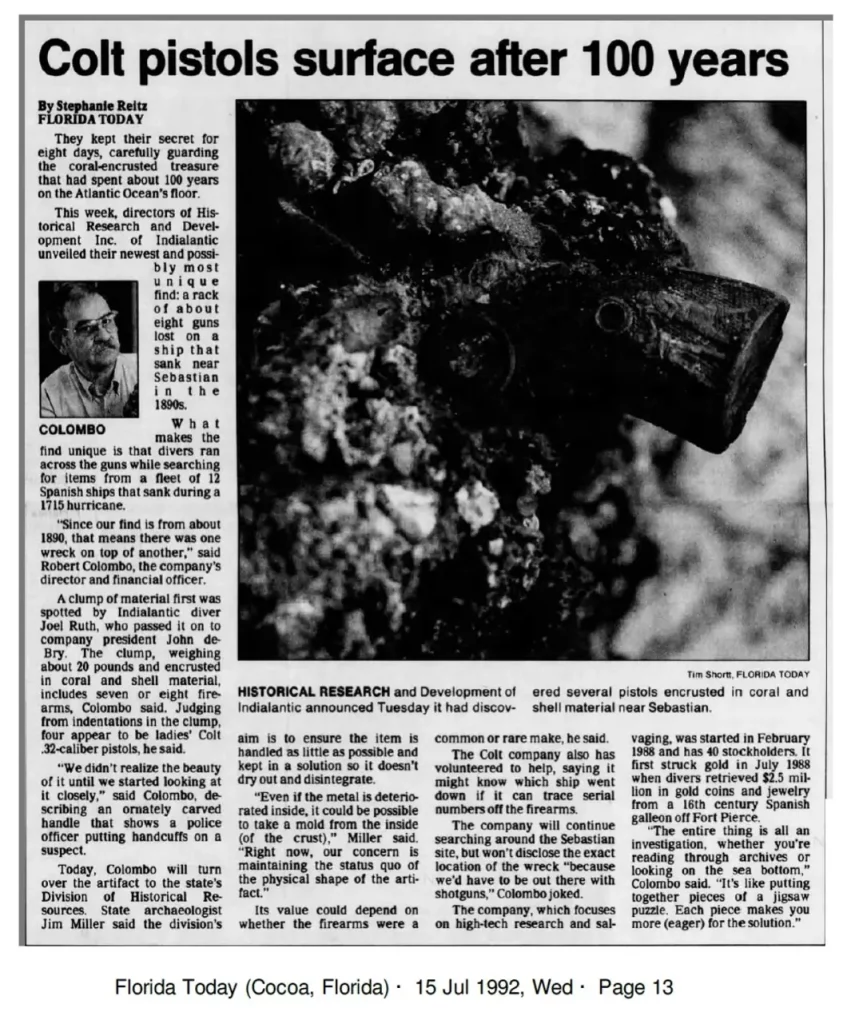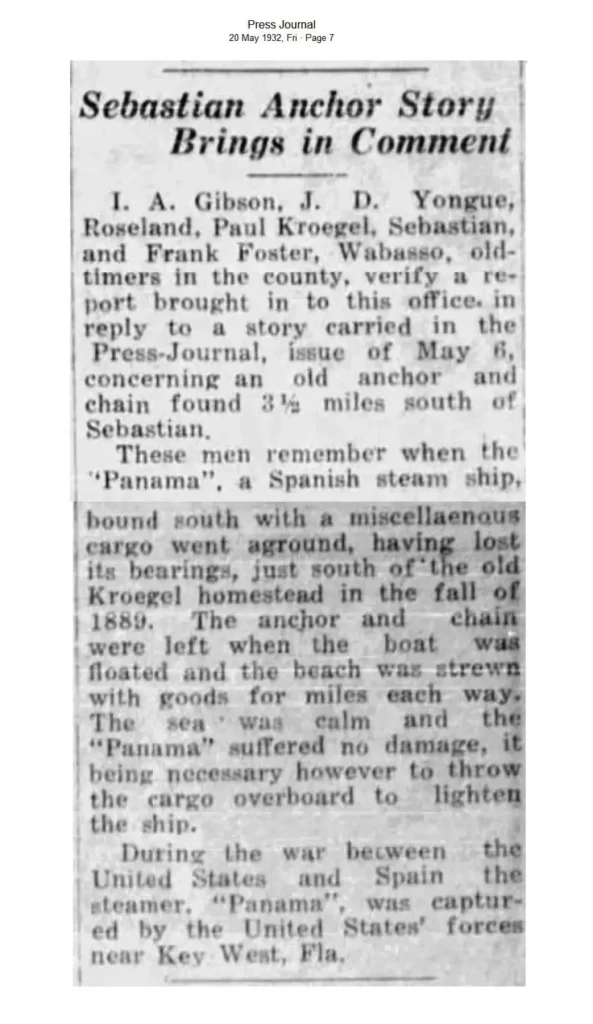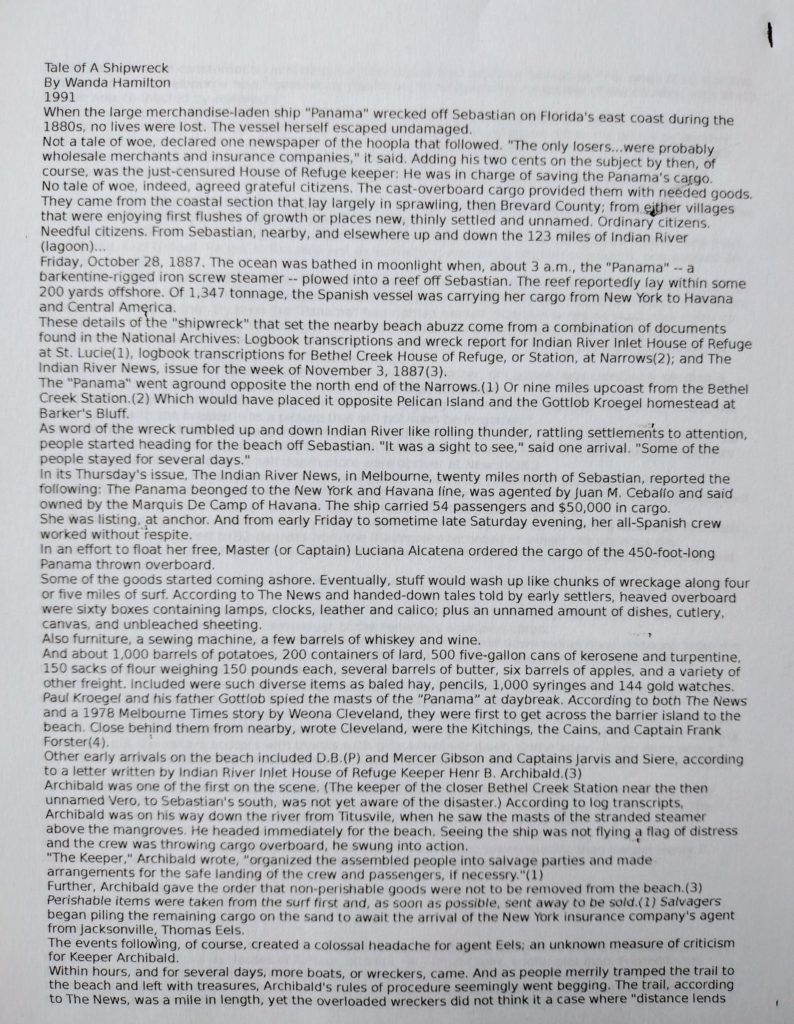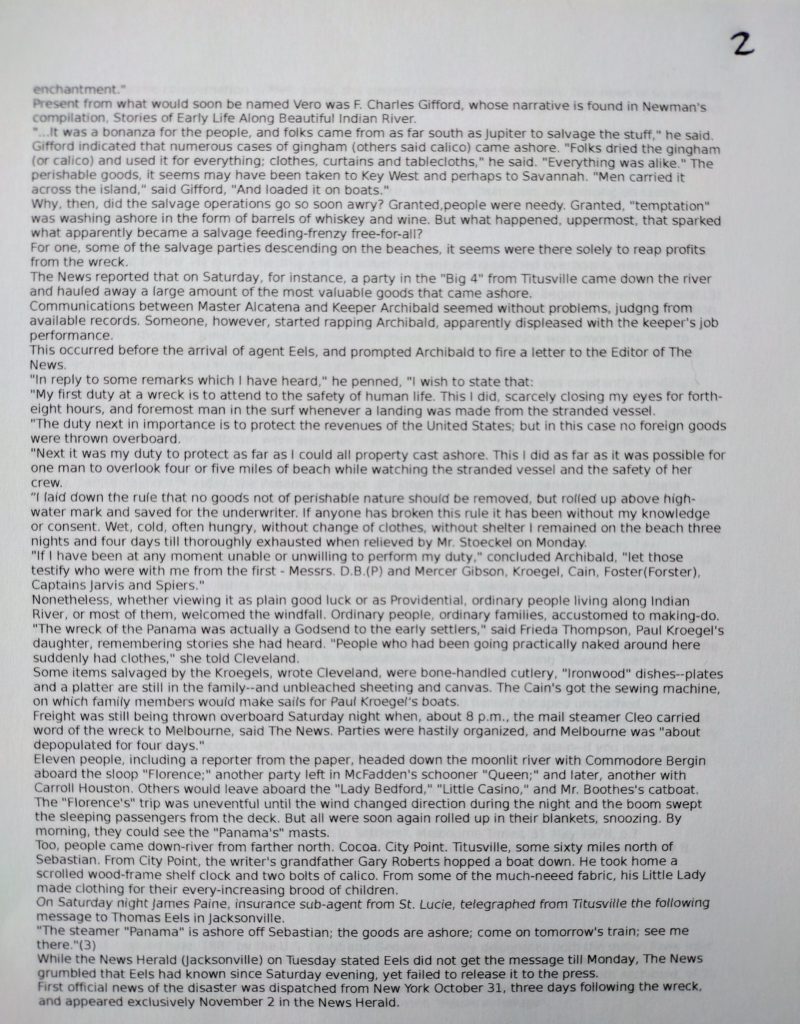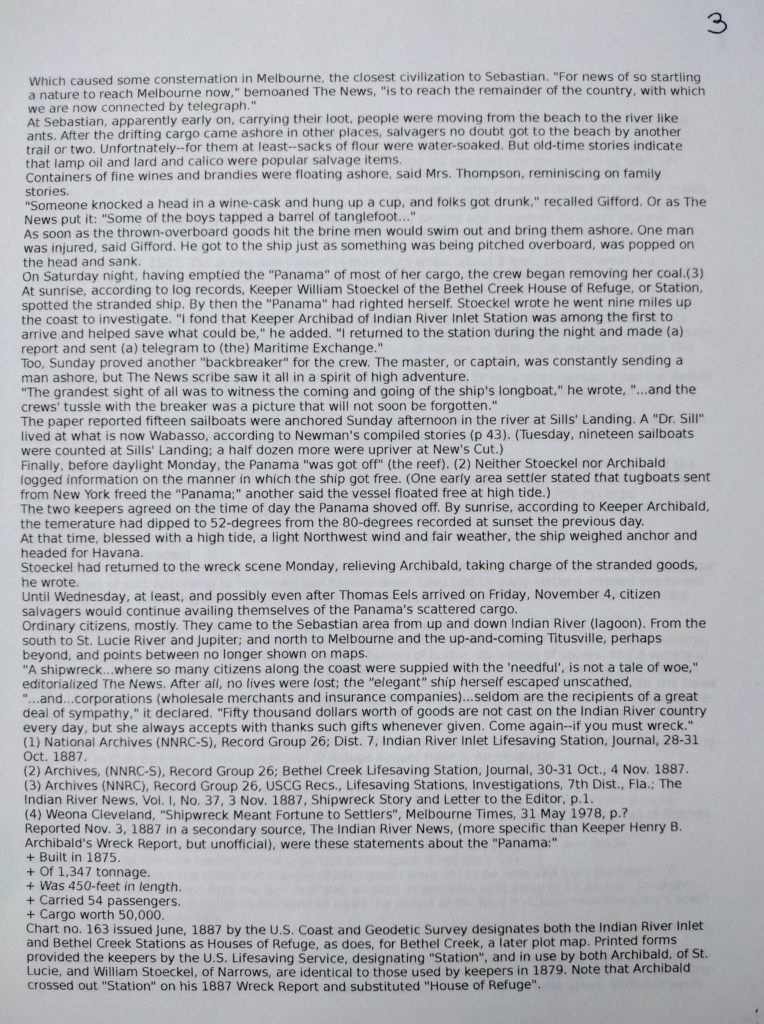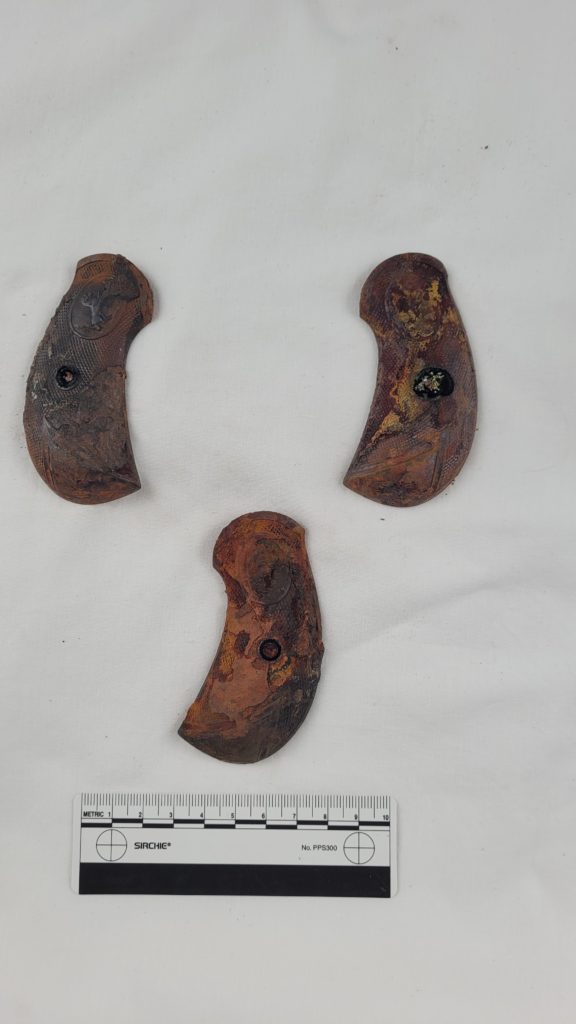In mid-1993 a mysterious conglomerate was delivered to Syd Jones of the Salvor’s Incorporated Artifact Conservation Lab in Sebastian, Florida. It arrived in a green bucket which bore a yellow tag bearing artifact number 20472. The conglomerate was approximately 30cm x 18cm x 16cm. However, it was unlike any conglomerate that Syd Jones had seen before. It was because this conglomerate contained eight Colt pistols. What does this have to do with the 1715 Fleet? Here is the answer:
On a calm, sunny day in 1992, the crew of the recovery vessel Virgalona captained by Demostenes “Mo” Molinar was conducting a salvage operation on the 1715 Cabin Wreck site just south of Sebastian Inlet. Due to unfavorable visibility conditions at that location, the crew was directed to move south to what is known as the “Cannon WreckLocated about 2.3 miles south of the “Cabin Wreck”. At this site in August 1992 Captain Steve Shouppe of Galleon Research Incorporated, found 39 gold coins dated 1697 – 1714. The coins were obvi... More” believed to be a post 1715 British pirate ship caught while poaching the wrecks of the 1715 Fleet and sunk by the Spanish. (NOTE: This belief has never been proven. To this day there is no definitive evidence that the Cannon WreckLocated about 2.3 miles south of the “Cabin Wreck”. At this site in August 1992 Captain Steve Shouppe of Galleon Research Incorporated, found 39 gold coins dated 1697 – 1714. The coins were obvi... More is the remains of a Pirate ship.) The Virgalona anchored in 20 feet of water and began excavation. While searching in this area Joel Ruth, one of the divers, found a clump, or conglomerate, of encrusted material. It was believed that the conglomerate contained spikes or nails which was common for 19th century wrecks. As he was showing the clump to Captain Molinar it slipped out of his hand and fell to the deck. A portion of the encrusted conglomerate broke off revealing a pistol grip. It was immediately apparent that this was not a cluster of iron spikes but rather neatly arranged weapons that were packaged for shipment. The pistol grip was made of a hard rubber and on it was the word “Colt”. The Colt Company was contacted, and after photos of the exposed grips were sent, they identified the pistols as vintage 1890. The shipment could be traced if a serial number could be found.
Back in the lab, conservator Syd Jones examined the unusual item and decided to continue removing the encrustation where the handgrip was previously exposed. (Incidentally, the exposed grip pictured a police officer putting handcuffs on a suspect.)
A partial, but illegible, serial number was visible on the plated area on the bottom of the grip. However, the frame, cylinder, and barrel were found to be converted entirely to corrosion products. After extensive effort was made to save the pistols, it became apparent that none of the metal or plating survived. The only surviving elements of the conglomerate were the handgrips, as the ferrous portion of the weapons were rendered unconservable. No indication of a container holding the guns was found.
A phone call to Syd Jones was made on March 24, 2024, to see if he could recall his conservation efforts in this case. After 30 years he still remembered the pistol conglomerate and how fragile the artifact was. Specifically, he was asked if he knew what became of this most intriguing find. He was not able to say where the pistols (or what remained of them ) ended up. He did say that because the pistols were in such bad shape and unconservable it is possible that they continued to deteriorate until they would become essentially just a pile of rust or dust.
Just how these pistols ended up in the Atlantic Ocean at the Cannon WreckLocated about 2.3 miles south of the “Cabin Wreck”. At this site in August 1992 Captain Steve Shouppe of Galleon Research Incorporated, found 39 gold coins dated 1697 – 1714. The coins were obvi... More site may never be known. It will be just another mystery associated with the 1715 Fleet.
POSTSCRIPT #1: After this article was written I reached out to Tom Gidus a historian and avocational archaeologist from North Palm Beach to see if he could shed some light on this mystery. Tom has researched many wrecks along the Atlantic Coast and I thought that he might have come across a modern wreck that occurred in the Cannon WreckLocated about 2.3 miles south of the “Cabin Wreck”. At this site in August 1992 Captain Steve Shouppe of Galleon Research Incorporated, found 39 gold coins dated 1697 – 1714. The coins were obvi... More area around 1890 which was when the pistols were dated by the Colt Company.. Sure enough he suggested that the pistols may have had their origin on the steamship Panama. He indicated that this steamship was grounded on the reef near the Cannon WreckLocated about 2.3 miles south of the “Cabin Wreck”. At this site in August 1992 Captain Steve Shouppe of Galleon Research Incorporated, found 39 gold coins dated 1697 – 1714. The coins were obvi... More site in the 1890’s. To lighten its load to escape the reef, the cargo of the Panama was thrown overboard so that the ship could be towed off the reef. This appears to be a very reasonable explanation for the anomalous conglomeration containing the eight Colt pistols. Many thanks to Tom Gidus for this information.
POSTSCRIPT #2: After concluding this post yesterday I received more material from Tom Gidus (mentioned above). Below you will find some newspaper articles as well as a story written by Wanda Hamiton in 1991 about the wreck of the Panama.
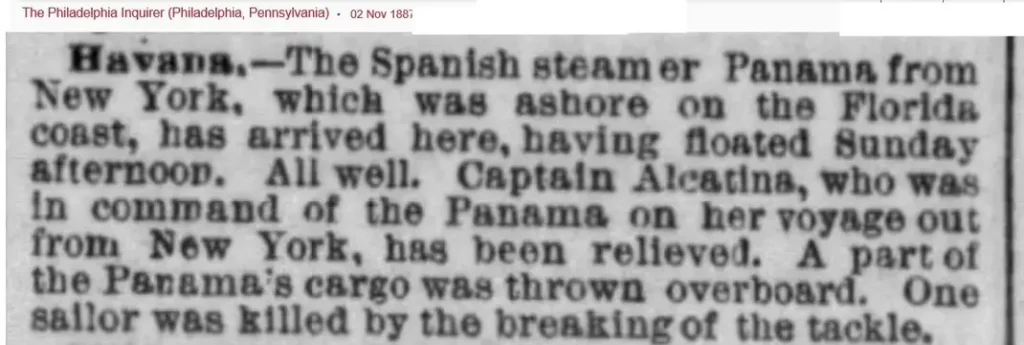
It would appear that based on the evidence that has been uncovered by Tom Gidus the mystery of the origin of the Colt pistols has now been officially solved. As to what happened to the pistols after they left the conservation lab in Sebastian that mystery has been solved as well. I contacted the Bureau of Archaeological Research in Tallahassee and sure enough they had the conglomerate and the pistol grips which were able to survive due to its hard rubber content. See image below.
In addition The Bureau of Archaeological Research also sent along this historical tid-bit (below).
30 October 1887 ‐ Weekly Transcript of Journal, Bethel Creek Station, District 7
William Stockel – At sunrise this day I sighted a steamer up the coast, apparently lying at anchor. Upon going there found that it was the Spanish Steamship Panama, bound from New York to Havana; and that she on Oct 28, at about 3 am ran ashore 9 mi. N. of this sta. And, upon throwing overboard considerable of her cargo, was got off at sunrise Oct 30. I found that keeper Archibald, of Indian River Inlet Sta. was among the first to arrive and helped save what could be. I returned to Sta. during the night and made report and sent telegram to Maritime Exchange.
[Weather and condition of house is also reported.]
Another report that is mentioned in the book “Miley’s Memos”. It states that the St. Lucie County Historical Museum has the original record of shipwrecks to which aid was given by the keeper of the house during the period of Oct 28, 1887 to March 23, 1913.
Thirty‐four “wrecks” are included in the lost reports, most of them involving small craft such as fishing boats, yachts, small schooners, etc. But, the first one was that of the S.S. Panama, a barkentine steamer, 1,300 tons, from an unlisted Spanish port, bound from New York to Havana and Central America with a cargo of lard and general merchandise. There were between 400 and 500 passengers aboard, over 400 of them Italian immigrants.
The wreck occurred Oct 28, 1887. The ship became stranded 400 yards from shore, about 3 a.m. in nearly calm seas “within the limits of Bethel Creek House of Refuge but out of sight of the house, about eight miles off the north‐westward.”
One life was lost – the steward, who was struck by a breaking tackle and knocked overboard, failing to rise. The body was not recovered.
Cargo valued at 10,000 was saved and the ship suffered only slight damage. The wreck was discovered by Paul Kroegel (keeper of the government Pelican Island reserve) and the Keeper of the House of Refuge, H. B. Archibald.
Submitted by Ben Costello, President, 1715 Fleet Society
